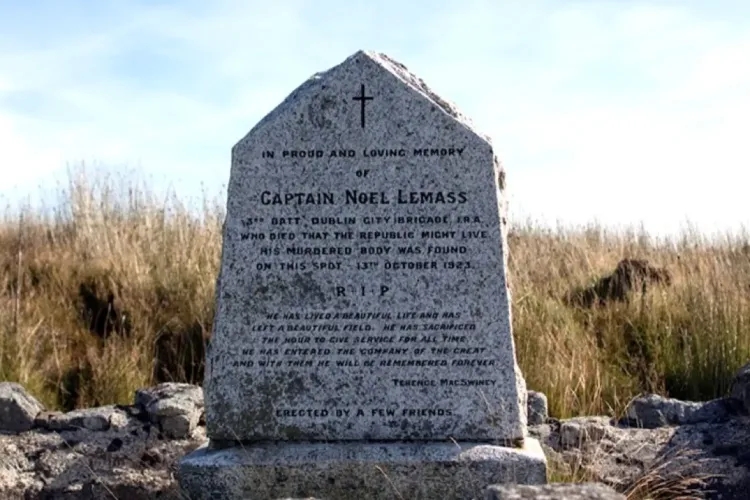Introduction
IRA Captain Noel Lemass, aged 25, was abducted in broad daylight on a Dublin street on this day 100 years ago (03 July 1923) by plain-clothed suspected National Army intelligence officers. His decomposed and mutilated body was found on 12 October 1923 in the Dublin Mountains. The family of Noel Lemass did not apply for a dependents allowance or gratuity but they did successfully apply for a posthumous Service (1917-1921) Medal and 1916 Medal which are available to view in the Military Archives – see file MD915.
This blog article is an attempt to trace his Irish Volunteer and IRA service through the military service pension files of men and women who served alongside him in the republican movement. Noel Lemass was arrested and imprisoned by the British on four separate occasions in 1916, 1918, 1919 and 1920. He was also captured by Free State forces twice in 1922 but managed to escape from custody both times.
Early Life and 1916 Rising
Noel Lemass was born on 15 December 1897 into relatively comfortable surroundings. He was the eldest of seven children of John Timothy Lemass and his wife Frances (née Phelan). His father owned a men’s clothing business at 2-3 Capel Street beside Grattan Bridge, Dublin and the family lived over the shop in an eight-roomed house with a domestic servant.
Noel Lemass and his younger brother Sean (MSP34REF2078) joined A Company, 3 Battalion, Dublin, Brigade, Irish Volunteers in early 1915. Tragedy struck the family in January 1916 when Sean Lemass accidentally shot and killed his baby brother Herbert (just shy of two years old) in the family living room while handling arms. The brothers were not mobilised by their OCs for the Easter Rising but joined the GPO Garrison on Easter Tuesday when they found out the insurrection had gone ahead.
On Wednesday he was in the Imperial Hotel garrison, and volunteered to take a dispatch to the General Post Office (GPO). He came under heavy machine gun and sniper fire as he dashed across the street and was shot in the ankle on his return from the GPO. According to Jimmy Wren’s book on the GPO Garrison, Ned Boland (MD913), brother of Harry (MD909), and Joe Whelan (MSP34REF8978) (Irish Citizen Army), carried Lemass back to the hotel. Martha Murphy (née Kelly) (MSP34REF11828) of Cumann na mBan says that she tended to his wounds.

Lemass was carried by stretcher from the Imperial Hotel, as it was abandoned, and he was captured by British forces in a tenement in Marlborough Street on Friday morning with fellow wounded volunteer Harry Manning (MSP34REF9996). He was brought to the hospital in Dublin Castle with other wounded prisoners and released after about three months.
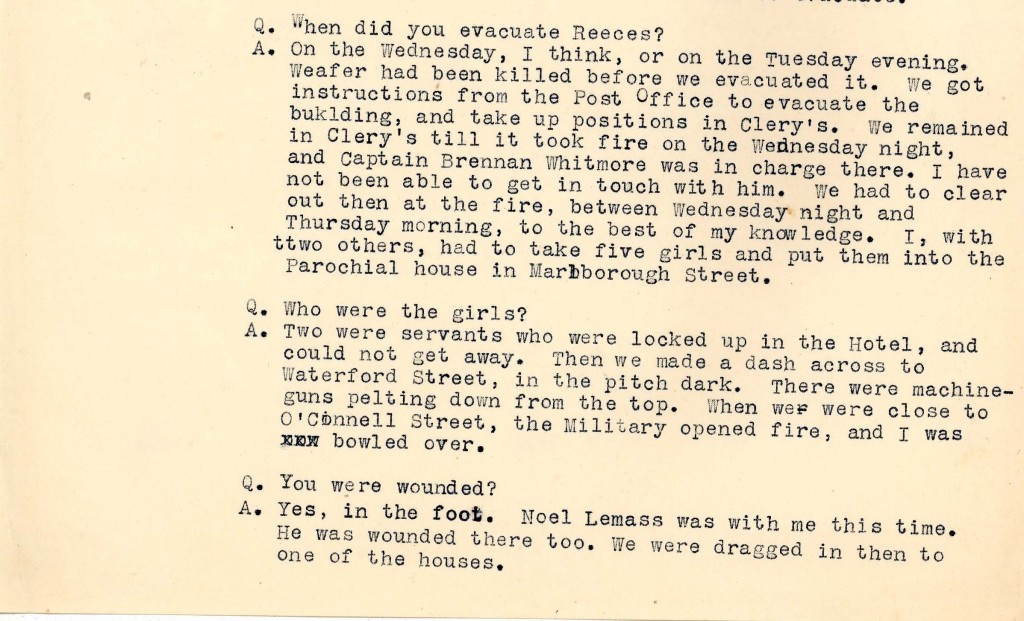
1918 period
Noel became an apprentice engineer with the Great Southern Railway and spent some time in Cork before returning to Dublin to take a position in the Dublin Corporation. Following the re-organising of the Irish Volunteers, Noel Lemass was one of the many who travelled to Newry in February 1918 to help Sinn Féin in the South Armagh-by-election. In this period, he was attached to the Engineers Company, 3 Battalion, Dublin Brigade, Irish Volunteers and gave engineering classes with Hugh Holohan (MSP34REF18749) at Parnell Square. Andrew Hyland (MSP34REF10096) recalls that Noel Lemass and Holohan were the instructors at a three-day training camp that was held in the Dublin Mountains in May 1918. It was broken up by police and two men (C Collins and Kit Mullen) were captured with gelignite and imprisoned.

On 14 June 1918, Noel Lemass was one of about 22 Irish Volunteers from the Engineers Company and C Company of 3 Battalion who were arrested during a raid by the police on their hall at 41 York Street near St Stephen’s Green. They were charged with illegal drilling and sentenced to two months imprisonment. Noel Lemass served his sentence in Mountjoy Jail, Dublin and Crumlin Road, Belfast. Richard Sweetman (MSP34REF22272) recalls that he moved munitions from the Lemass home on Capel Street after his arrest.
War of Independence (1919 – 1921)
In the late 1918/early 1919 period, Noel Lemass was sent out to South Dublin to help organise and train the men of the Blackrock Company. Mary Catherine (née Nolan) (MSP34REF21849) says in her MSP application that she worked alongside Noel Lemass including storing his gun and doing dispatch work for him.

On 19 October 1919, a training camp in Glencullen in the Dublin Mountains for members of Deansgrange and Blackrock IRA companies was raided by the Dublin Metropolitan Police (DMP). Noel Lemass and others were arrested and charged with illegal drilling and possession of arms. Lemass told the court marital at Ship Street Barracks: “I fail to see how a court constituted of an army of occupation can try me on these charges” (Kerry News, 12 Nov 1919). He was sentenced to six months imprisonment, served his sentence in Kilkenny Jail, Derry Jail and Mountjoy Prison, Dublin and was released about May 1920.
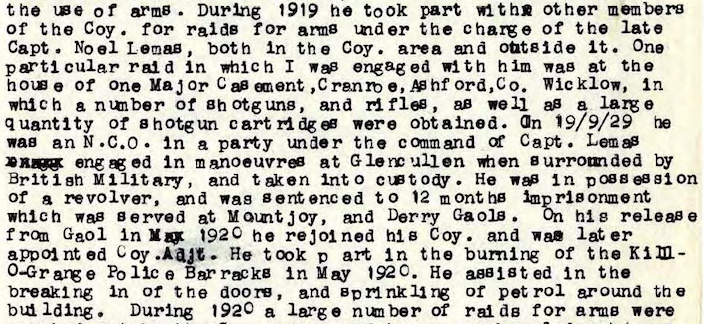
Noel Lemass was appointed Company Captain of E Company, 3 Battalion, Dublin Brigade, IRA in early 1921 following the arrest of Michael Tannam.

He took part in several operations including a well-planned ambush on the Stillorgan Road where Noel was detailed to open fire at British army lorries on his own. They followed him down to Nutley Lane where the main body of IRA was lying in wait.
Noel Lemass was arrested again by British forces in May 1921 and held in Kilkenny Jail where he was O/C Prisoners.
Truce Period
He was released in December 1921 as part of the general amnesty for IRA prisoners under the terms of the Anglo-Irish Treaty. In the Truce period, E Company’s numbers swelled due to an influx of new recruits. It was split up into two new companies – M and N – and Noel Lemass took control of N Company in January 1922 which had about 35 members. James Keogh (MSP34REF2397) claims that he was the First Lieutenant and later Edward Burke (MSP34REF2196). Lemass was OC of the IRA garrison in the Kildare Street Club from early April to late May 1922.
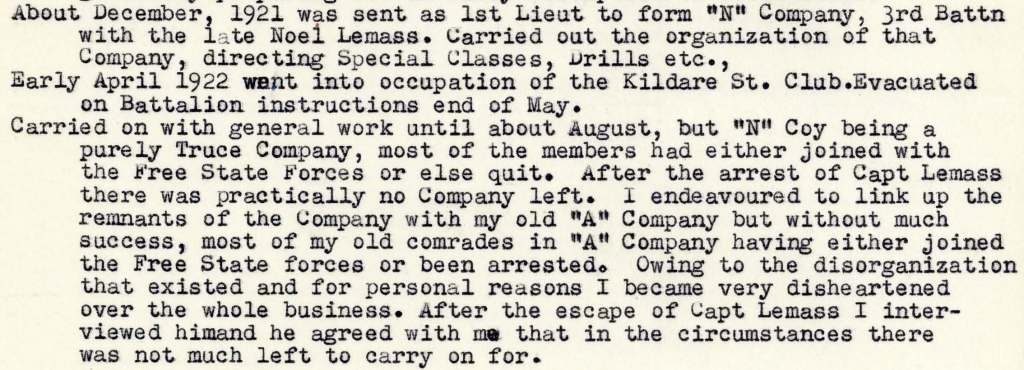
Civil War – The Battle of Dublin (28 June – 05 July 1922)
Taking the anti-Treaty side in the Civil War, Noel Lemass was in charge of an IRA outpost at the Royal Irish Automobile Club, 34 Dawson Street for one day. He was later in joint command of another outpost in the United Services Club, 8 St Stephen’s Green with K Company, 3 Battalion, Dublin Brigade, IRA and the Inighidhe Branch of Cumann na mBan. Following the surrender of IRA forces in Dublin on 05 July 1922, he escaped to the home of Mrs Woods, Donnybrook with Henry O’Farrell (MSP34REF2525) (Company Captain of K Company).
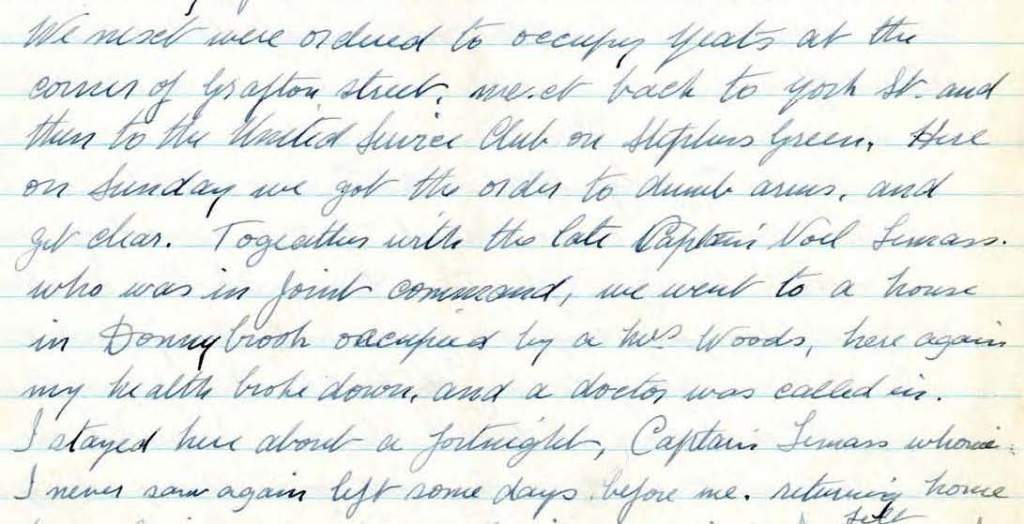
Two prison escapes
Noel Lemass was picked up by National forces but managed to escape from Portobello Barracks, Dublin on 14 July 1922 in a large breakout with Robert Barton (49SP6028), Joseph MacDonagh and about 40 other prisoners. Noel Lemass returned to active service with the IRA but on the “Night of the Bridges” (05-06 August 1922) was captured with four others in a car at Glencullen in South County Dublin. He was interned in Kilmainham Jail, Dublin and later Gormanston camp, County Meath where he escaped from on 14 September 1922 with other IRA prisoners including Tom Barry (MSP34REF57456), Hugh Early (MSP34REF746), Martin Hogan (DP4458), Ned Gahan and Sean Quinn.

Abduction and murder
It is reported that Noel Lemass spent some time on the run in England but returned to Dublin in the early summer of 1923 following the IRA ceasefire and ‘dump arms’ order in late May. National Army officers abducted him on 03 July 1923 in broad daylight outside MacNeill’s hardware shop at the corner of Exchequer Street and Drury Street. He had just had lunch with a friend at the Wicklow Hotel. His mutilated body was not found until 12 October 1923 in the Featherbed Mountain about 20 yards from the Glencree Road in an area locally known as “The Shoots”. The Leitrim Observer of 20 October 1923 described that Civic Guards found his body:
clothed in a dark tweed suit, light shirt, silk socks, spats and a knitted tie. The pockets contained Rosary beads, a watch-glass, a rimless glass, a tobacco pouch and an empty cigarette case. The trousers’ pockets were turned inside out, as if they had been rifled. There was what appeared to be an entrance bullet wound on the left temple, and the top of the skull was broken, suggesting an exit wound.
There were obvious signs of torture. Noel was shot at least three times in the head and his left arm was fractured. His right foot was never found. His glasses were identified by optician James O’Dea, later to become famous pantomime dame Jimmy O’Dea, who was a neighbour and former classmate of Noel and Sean.
Mary Lalor (née Hyland) (MSP34REF59806), Director of Intelligence of Cumann na mBan, claims that she helped to organise his funeral which took place on 16 October 1923. It was reported in the newspapers that large crowds accompanied the hearse after mass in the Pro Catherdal to Glasnevin Cemetery. Republican prisoners in Mountjoy were seen waving handkerchiefs from their cell windows as the cortege passed.

Sean Thorpe (MSP34REF807), Company Captain of H Company, 1 Battalion, Dublin Brigade, IRA, was part of the firing party at his burial in Glasnevin which was attended by at least 5,000 people.
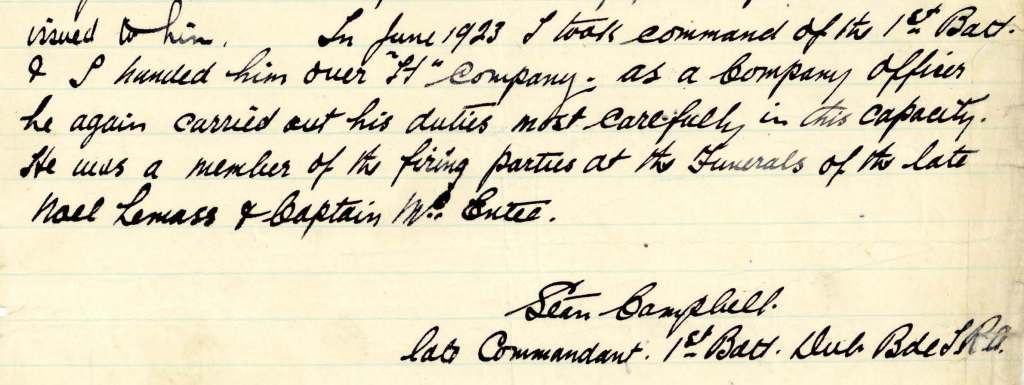
Postscript
No one was ever charged or convicted of the murder of Noel Lemass. However, it is widely believed that National Army Captain James Murray of Free State Intelligence (Criminal Investigation Department Oriel House) was the chief person responsible. Murray died in prison in 1929 of tuberculosis. On 13 December 1923, Joseph Bergin (3D154), a military policeman in the Curragh camp in County Kidlare, was abducted, tortured, shot dead and dumped in the Grand Canal near the Milltown Bridge in Co. Kildare. His killing was very similar to that of Noel Lemass. Bergin was believed to have been passing on information to IRA prisoners. The lead suspect Captain James Murray initially fled to Argentina but was arrested after returning to Ireland. He was convicted and sentenced to death in June 1925 but this was commuted to life imprisonment.
The location where the body of Noel Lemass was found was marked by a memorial cross in 1924. It was the scene of Fianna Fáil annual commemorations from the early 1930s to the late 1970s. A new memorial was unveiled in 1998 when Fianna Fáil transferred ownership of the monument to the National Graves Association (NGA).
